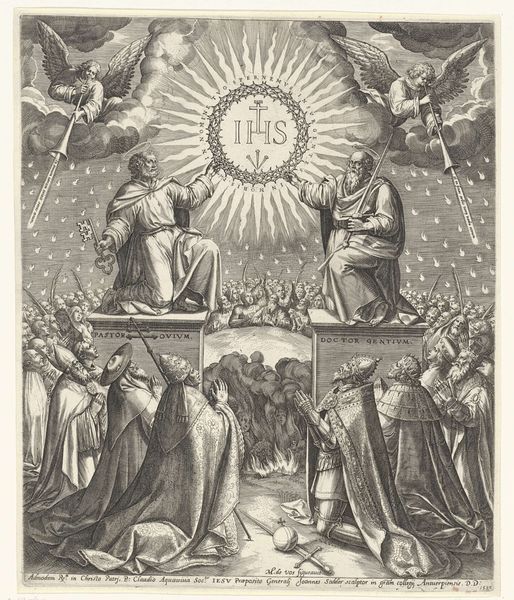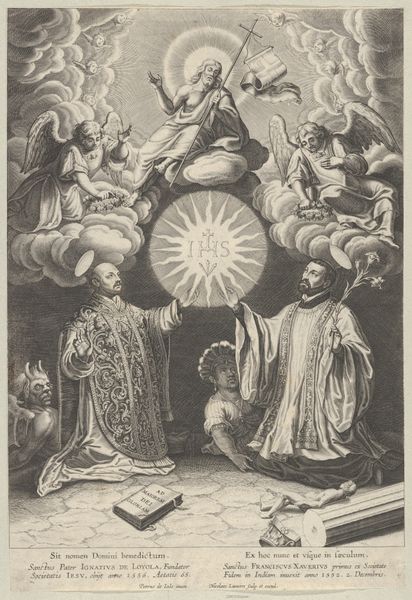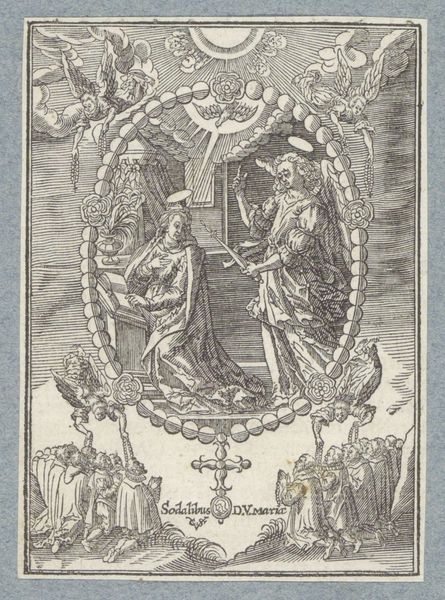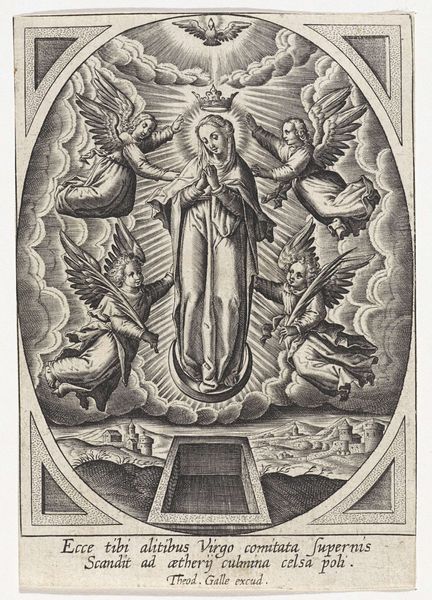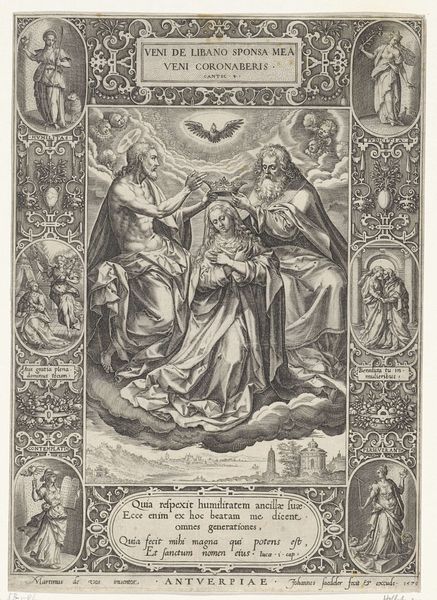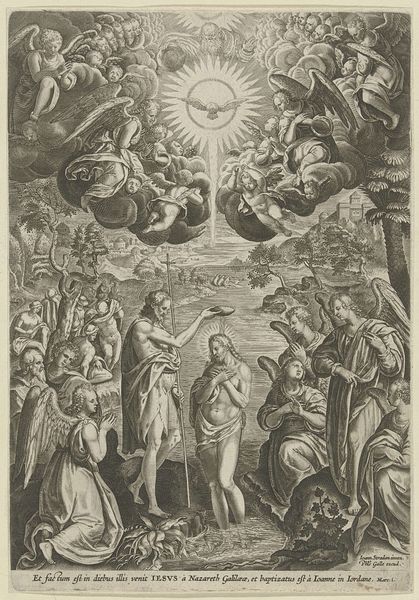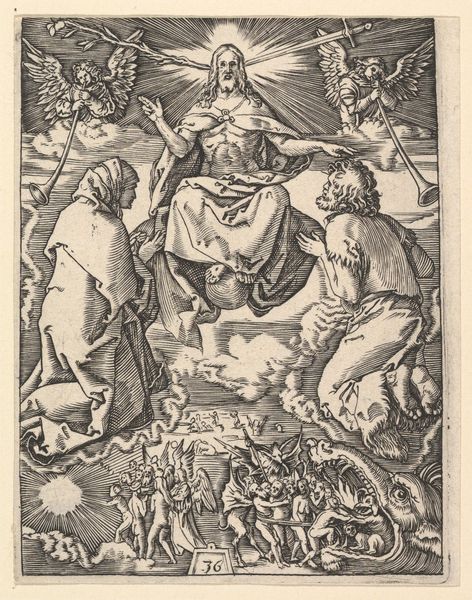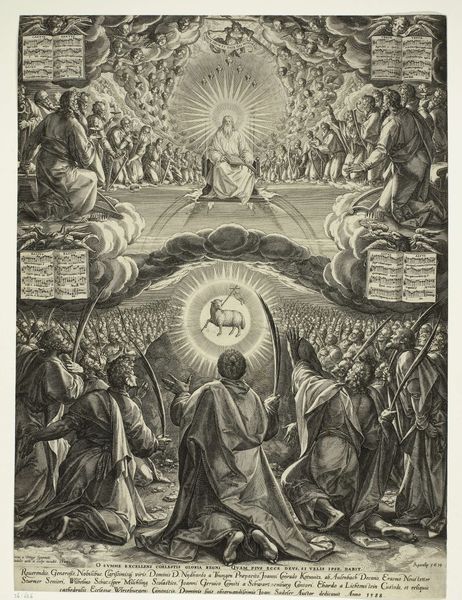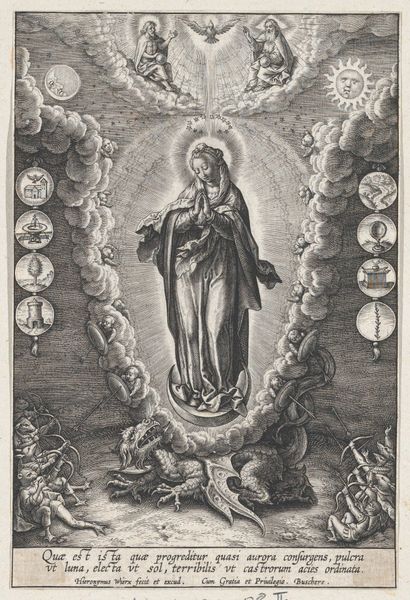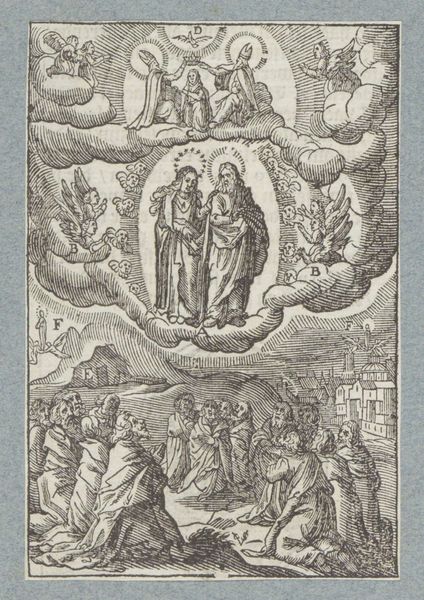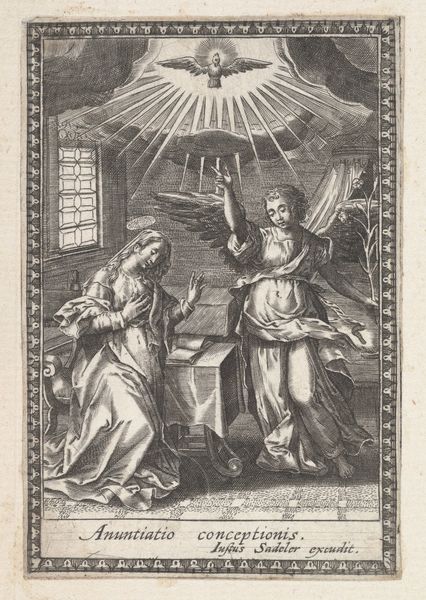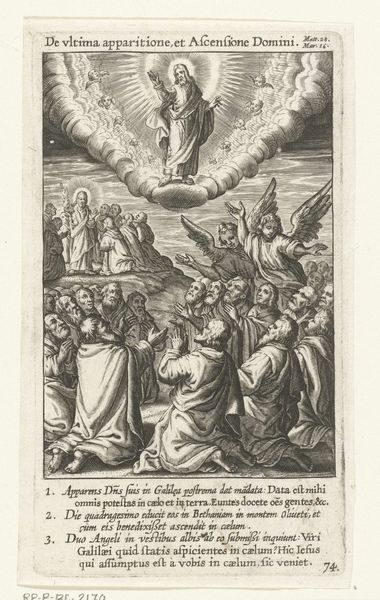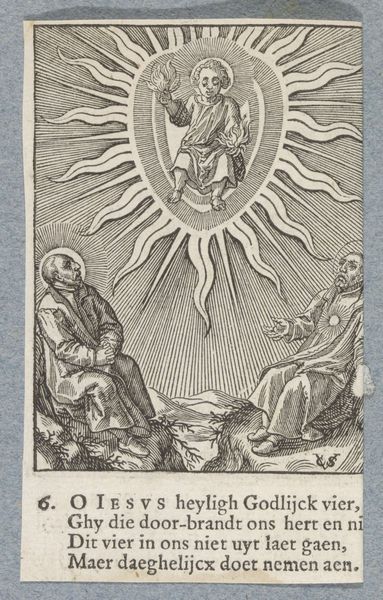
print, engraving
#
allegory
#
pen drawing
# print
#
pen illustration
#
pen sketch
#
old engraving style
#
figuration
#
11_renaissance
#
line
#
northern-renaissance
#
engraving
Dimensions: height 122 mm, width 85 mm
Copyright: Rijks Museum: Open Domain
Editor: This engraving by Johann Sadeler I, "Engelen aanbidden het monogram van Christus," made in 1586, presents such an intricate and celestial scene. I am immediately struck by the density of figures and symbols. What socio-political context influenced this work? Curator: This print emerged during the Counter-Reformation, a period of intense religious and political upheaval. The Jesuit order, deeply involved with art as a means of spiritual persuasion, sought to reinforce Catholic dogma in response to the Protestant Reformation's challenge to the church's authority. Do you see how the artist employs visual rhetoric to convey a specific message? Editor: Yes, the angels and the IHS monogram, surrounded by countless faces, definitely create an image of overwhelming divine presence and adoration. It feels like a reaffirmation of Catholic power, visually emphasizing collective salvation. Curator: Exactly. Prints like this played a significant role in disseminating Counter-Reformation ideology to a wide audience. Consider the political power embedded in the very act of portraying this collective, heavenly adoration. It serves not only a religious purpose but also as a socio-political tool, strengthening the visual culture of the Catholic Church. How might this artwork have been received in different social circles during its time? Editor: Well, for Catholics, it would likely have reinforced their faith and identity, while for Protestants, it could have been seen as propaganda, further fueling the religious divide of the era. Curator: Precisely. It's crucial to remember that art from this period isn't just about aesthetic expression; it's deeply interwoven with religious and political power struggles. Reflecting on how this print would function as propaganda can offer new insight on Sadeler’s creative output. Editor: I see it much clearer now! Thank you, recognizing this print as more than art, but rather a tangible embodiment of power relations is so helpful. Curator: You're welcome. Understanding the artwork's position within socio-political conflicts definitely brings greater meaning to our interpretations.
Comments
No comments
Be the first to comment and join the conversation on the ultimate creative platform.
